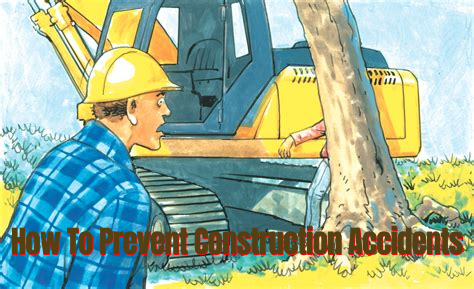Every year, thousands of construction workers are either injured or killed in accidents on the job. The construction industry has an inherent risk associated with it. In terms of the most dangerous workplace, construction work environment ranks second. Most of these accidents happen as a result of negligence of health and safety guidelines laid down by Occupational Safety and Health Administration.
As per OSHA’s data, there are about 1,200 fatalities per year in the United States on construction sites, which comes up to four per 10,000 workers. The majority of the fatalities are related to falling hazards, which comes up to approximately one-third of the total number of fatalities. Other common accidents include:
- Approximately one in four fatalities related to transportation accidents
- Approximately one in five fatalities related to impacts and collapses
- Approximately one in 10 fatalities related to electrocutions

Construction companies should provide primary importance to the safety and health of its employees. The management needs to ensure that all mechanical and physical facilities are in compliance with OSHA standards. However, to be successful, a cooperative effort in all safety matters, not only between management and employees, but also between the employee and their fellow workers is required. Some of the basic precautions to be exercised by the management to prevent construction accidents are mentioned below:
- First aid kits should be available on the job site to ensure its immediate use when an accident or injury occurs. A portable source of drinking water and toilet facilities should be made available to the employees as well
- Ladders or stairs should be provided for each elevation that is greater than 19 inches in height. Also, a worker should be harnessed for any elevation above 6 feet. In the case where ladders, stairs, scaffolds or a safety harness cannot be used, then safety nets should be provided where workplaces are more than 30 feet above ground or water level.
- All electrical equipment and tools should be grounded properly either by double insulation or through a third wire grounding.
- Only authorized and qualified people are allowed to operate or service motor vehicles and mechanical equipment.
- A sufficient number of hand-operated fire extinguishers should be located throughout the project site.
- Materials should be stored in such a way to prevent sliding, falling or collapse. The use of ropes, slings, and chains should be used to ensure that the materials are stacked, racked, blocked or interlocked.
- During gas welding and cutting operations, the cylinders should be kept far away from the actual welding spot so that the spark or flame do not reach them. In any case, fire resistant shield is always advisable to be used. An inspection of the torches should be done at the beginning of each working shift to make sure that there are no leaking shutoff valves, hose couplings, and top connections.
When going to a construction site, it’s crucial to note the possible hazards that can occur. Create a Site-Specific Healthy and Safety Plan to ensure workers aware of these hazards before beginning any project.
